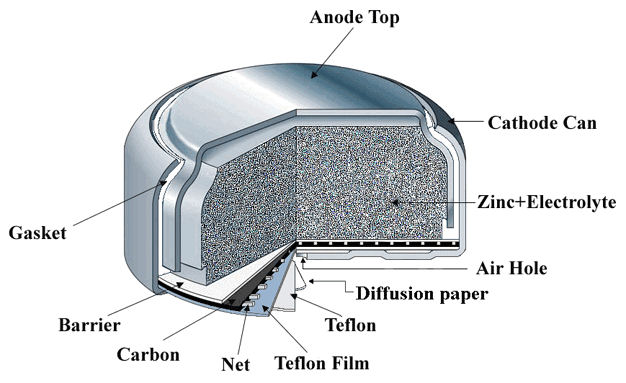Batteries
| Date Published: | |
| Last Modified: |
Child Pages
Overview
If you want a small battery for powering a low energy product or keeping a real-time clock (RTC) running, have a look at coin cells.
Lithium Thionyl Chloride Batteries
Overview
Lithium thionyl chloride batteries are non-rechargeable batteries that are good for long-term power applications such as wireless remote sensors, backup power for non-persistent memory ICs, and real-time clocks. They are different to family of rechargeable Lithium-ion battery technologies, such as Lithium-ion, Lithium-polymer and Lithium-iron phosphate.
Voltage
Lithium thionyl chloride batteries have a nominal voltage of 3.6V.
Current Draw
This is where Lithium thionyl chloride batteries show their weakness. They are really bad at providing large pulse currents, due to their high internal resistance. This can make the batteries bad at powering pulse-current drawing things like cellular modems. You can add super-capacitors to provide the pulse current in some applications. Some manufacturers have begun selling a combined battery/supercap module which allows for higher pulse currents.
Leakage Current
Lithium thionyl chloride batteries have a really low leakage current.
Discharge Characteristics
They have a pretty flat voltage discharge characteristic.
Energy Density
They have an energy density of 970mWh/cm^3 (when the discharge current is 100uA).
Temperature Range
They can be used over a wide temperature range of \(-55^\circ C\) to \(+85^\circ C\).
Chemical Reaction
Lithium thionyl chloride batteries use liquid thionyl chloride (\(SOCl_2\) as the positive active material, and lithium (Li) as the negative active material.
Note that the following table describes the reactions for discharging, the reactions occur in the opposite direction when the battery is recharging.
| Positive Reaction: | $$2SOCl_2 + 4Li^+ + 4e^- -> 4LiCl + S + SO_2$$ |
| Negative Reaction: | $$Li -> Li^+ + e^-$$ |
| Combined Reaction: | $$2SOCl_2 + 4Li -> 4LiCl + S + SO_2$$ |
Zinc-Air Batteries
Overview
Zinc-air batteries are batteries characterised by their use of zinc and a reaction with atmospheric oxygen. There is both non-rechargeable (primary) and rechargeable (secondary) zinc-air batteries, although the primary batteries are far more common.

A cut-away of a zinc-air button cell with annotations. Image from http://hear-better.com/.
Chemistry
A zinc-air battery is a specific type of metal-air battery.
The reactions at each part of the battery are shown below:
Anode
$$\begin{align} Zn + 4OH^- \to Zn(OH)_4^{2-} + 2e^- \end{align}$$This has a voltage potential of \(E_0 = -1.25V\).
Fluid
$$\begin{align} Zn(OH)_4^{2-} \to ZnO + H_2 O + 2OH^- \end{align}$$Cathode
$$\begin{align} \frac{1}{2}O_2 + H_2 O + 2e^- \to 2OH^- \end{align}$$This has a voltage potential of \(E_0 = 0.34V\).
Overall
$$\begin{align} 2Zn + O_2 \to 2ZnO \end{align}$$This has a voltage potential of \(E_0 = 1.59V\).
Voltage
The theoretical voltage of a zinc-air cell is 1.65V (based on the chemistry). In reality, the voltage of a zinc-air cell is between 1.35-1.4V.
Energy Density
One of zinc-air’s unique properties is that they consume atmospheric oxygen as part of the chemical reaction. This means that they can have higher energy densities than other similar batteries because one of the reactants is not actually contained within the battery.
Storage
Zinc-air batteries can be stored without losing much energy as long as oxygen is kept away from the battery. Digital hearing aids come with a little tab that must be removed before use, this tab prevents air from entering the battery and reacting with the zinc. They can last for 3 years with little capacity loss.
Applications
Most digital hearing aids use zinc-air button cells. You remove a tab to allow air into the battery, starting the reaction that produces an electro-motive force (i.e. the voltage).
Authors

This work is licensed under a Creative Commons Attribution 4.0 International License .



